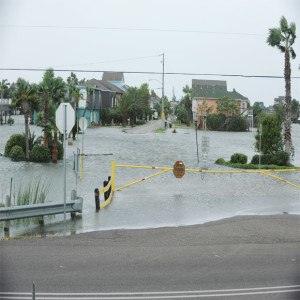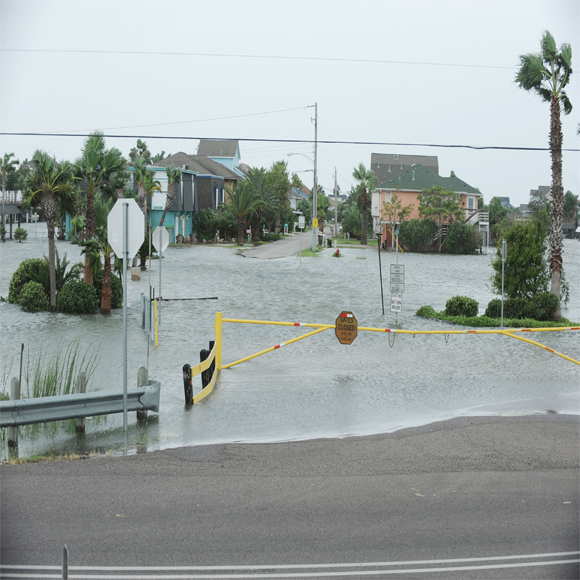More intense rain and higher sea levels are prompting Galveston officials to deviate from a drainage master plan written in 2003 by rethinking their approach to system improvements and requiring developers to meet more stringent drainage requirements.

The Galveston County Daily News reports the 2003 plan focused on improving drainage along specific streets and areas identified with the most significant flooding. But environmental changes, the consequences of which appeared in a series of significant floods last year, have pushed administrators to broaden their approach, City Manager Brian Maxwell said.
“We are taking a basin approach,” Maxwell said. “You can’t just improve the drainage on one street because you start getting all the water from the other streets that aren’t draining.”
Although Galveston weather goes through wet and dry cycles, the extremes are becoming more extreme, Assistant City Manager Brandon Cook said.
Cook oversees development and municipal services.
“You’ve got that double kind of effect where you’ve got sea level rising, high tides and you’re getting a whole lot more rain,” Cook said.
Meanwhile, climatologists warn of more intense rain across Texas in the future.
Federal scientists in September changed the definition of a 100-year flood in Galveston from 13.5 inches in a 24-hour period to 17 inches, according to the National Oceanic and Atmospheric Administration.
The change meant that climate scientists expect rains of up to 13.5 inches in 24 hours to occur more frequently than in the past.
Designing a system that can better handle more frequent heavy rains and higher high tides will require stricter building standards for developers, Maxwell said.
“They have to have some minimal retention,” Maxwell said.
This means developers can’t just release their water into the streets as surface drainage, but have to develop methods to manage that water, Maxwell said.
Retention methods might include things like deeper culverts and ties into the city drainage system, he said.
Hurricane Harvey, which struck in August 2017, also prompted a change in design standards for the drainage system capacity, City Engineer Daniel Christodoss said.
In 2018, the city rolled out more stringent design restrictions that required new construction to handle a 25-year, rather than a two-year rainfall event, he said.
This means systems must be designed to handle rain that statistics predict will happen only every 25 years.
“All other cities are hesitant,” Christodoss said. “We took a bold step.”
The higher standards have not been popular among builders because they often increase construction costs, Cook said.
City plans call for investing almost $600 million in drainage-related projects from 2013-2023, a figure that includes federal and state grants, city spokeswoman Marissa Barnett said.
It has already begun several large-scale drainage projects, including a $12.9 million effort to replace aging infrastructure on 18th Street, officials said.
While the city plans to write a comprehensive update of the 2003 drainage plan, the effort is largely on hold until the city learns whether it has been awarded federal money for a pilot pump station to relieve flooding downtown, Cook said.
Building the pump station would change the drainage master plan, but building it depends on getting the federal money, he said.
“We wouldn’t really be able to afford it all on our own,” Cook said.
The city also awaits the final coastal barrier plan to protect the region from storm surge, a $23 billion to $32 billion U.S. Army Corps of Engineers effort scheduled for a final draft in 2021, Maxwell said.
This project will have a significant impact on the way Galveston handles drainage, he said.
Was this article valuable?
Here are more articles you may enjoy.


 Palantir Poaching Suit Called ‘Scare’ Tactic by Ex-Employees
Palantir Poaching Suit Called ‘Scare’ Tactic by Ex-Employees  Singer’s Elliott Sued by PE Firm in Escalating Fight Over Money
Singer’s Elliott Sued by PE Firm in Escalating Fight Over Money  Musk’s xAI Faces California AG Probe Over Grok Sexual Images
Musk’s xAI Faces California AG Probe Over Grok Sexual Images  First Brands Judge Approves Examiner to Probe Fraud Allegations
First Brands Judge Approves Examiner to Probe Fraud Allegations 